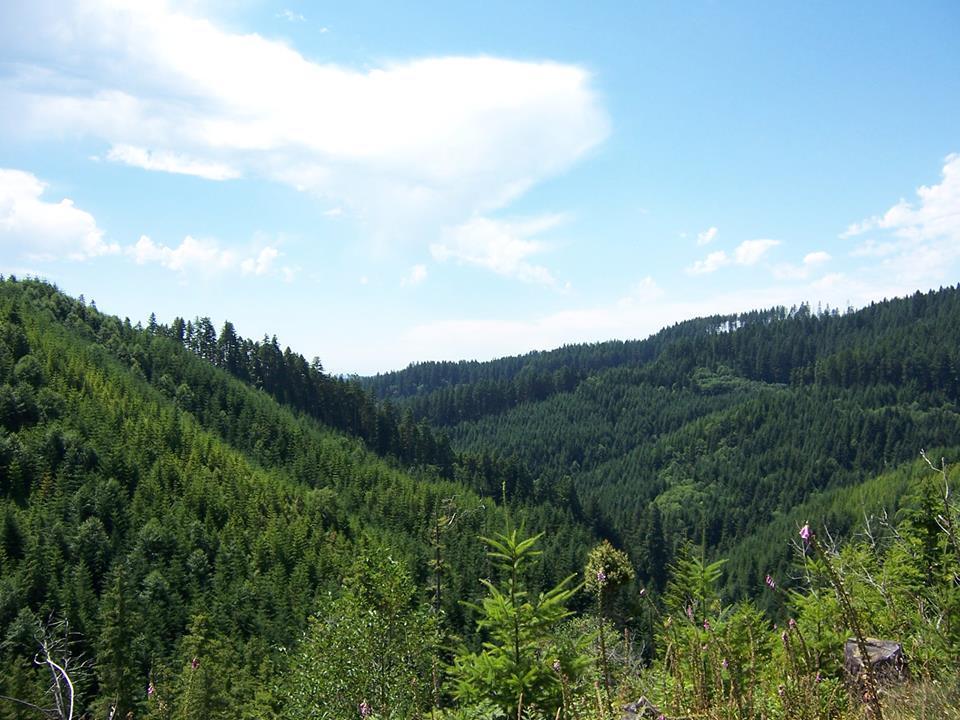By Peter Hayes
Hayes and his family own and care for Hyla Woods in the Oregon Coast Range. Hayes served on the Oregon Board of Forestry from 2007 to 2011.
For how many decades have Oregonians opened the newspaper and read of our fellow citizens in conflict over forest-related issues? Debate over our proper relationships to forests is not only inevitable but also healthy, when handled well. But the nature, form and tenor of these tensions and conflicts have changed.
These conflicts – whether it is the future of the Elliott State Forest, the Oregon Department of Forestry’s challenges, state forest litigation, implications of pending climate legislation – are more numerous and paralyzing than ever before. They involve increasingly complex considerations, including the role of climate, water and wildlife. And when we most need to count on democratic processes and functional government to help us resolve these issues, our state and federal governments seem incapable of doing what we rely on them to do – develop common ground on which solutions can be built. So we find ourselves fighting our battles through litigation, initiatives and protests and making it nearly impossible for the Department of Forestry to function.
As a multigenerational forest and sawmill owner, I see that these problems demand that we work together. We can and must take action to create a better path, with six principles to guide us:
- It is time to acknowledge that the forest-related conflicts listed above are symptoms of a culture wrestling with a pair of fundamental questions – “What is a forest for?” and “How will we build enough common ground to allow us to move beyond this dangerously divided situation?” Whether it is in the board room, court room, voting booth, protest barricade or the cab of a log truck circling the Capitol honking in protest, the underlying questions are the same.
- Oregonians must become better informed, more engaged with, and more vocal about our forests and their future. To do this we must dig beneath the deliberately deceptive illusions propagated by vested interests, to better understand the circumstance, issues and choices.
- We must accept that responsible forest stewardship, public and private, depends on us shifting from seeing and treating forests as commodities belonging to us to seeing them as communities within which we, as members, have responsibilities.
- It is time for us to tell elected and appointed officials that we expect them to become knowledgeable about and take effective leadership on forest issues. As a former member of the Board of Forestry, I see that government will only fairly lead on forest issues once the corrupting power of corporate campaign donations have been removed.
- We must join in imagining and creating better approaches to forestry that are climate smart, water wise, fire adapted and that support the vitality of rural communities through a reliable forest economy. Many of us have worked for decades to test and show what forests can be for by moving beyond timber-centric models to create economically viable, multi-value forests. We have many structures, including watershed councils and forest collaboratives, that demonstrate our ability to build powerful bridges to heal this divided world; we can and must make better use of them.
- And finally, we must acknowledge that forests have been, are, and will always be central to the heart, soul, and character of this state and its citizens. Responsible, innovative forest stewardship must be a cornerstone of our vision of our shared future. As Northwesterners step up to meet the interwoven challenges of climate, water, and too little rural opportunity, we should better harness our most unique superpower – our forests’ underutilized potential to help meet these challenges.
When we care for Oregon forests with respect and a long-term vision, we know that they will sustain us. At the same time that we, as a species, are at a critical decision point in relation to the earth’s climate, Oregonians face the choice of whether we will rise above our differences to build the common ground needed to live compatibly with forests and one another in the long run.


.png)